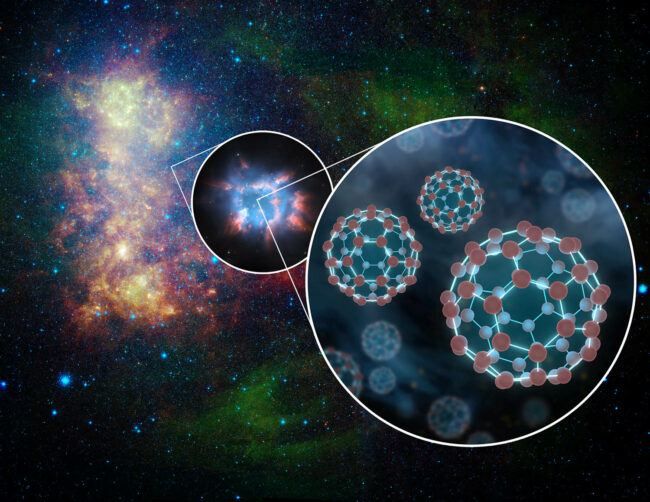Our understanding of the universe relies on many scientific disciplines to explain its structure and evolutionary mechanisms. Over the last few decades, the emerging science of ‘astrochemistry’ has begun to gain momentum in the field of astronomy. This new science aims to detect and identify molecular compounds outside our planet1. In the last few years, this research area has expanded to tackle some tough questions such as explaining the formation of solar systems and even the origin of life in the universe.
Astrochemistry utilises a range of advanced telescopes and detection techniques and has led to a number of unique discoveries. Since the first detection of water in interstellar space, many molecules have been discovered which support the conclusion that hydrogen and carbon monoxide are the most abundant molecules in the universe2. Astrochemistry has also shown that the presence of dust clouds may enable new chemical reactions in space to take place. It is hoped that this will lead to the discovery of nanoparticles that are able to catalyse oxidizing reactions of organic compounds to produce important molecules such as amino acids3.
The recent discovery of complex chemical systems in space has been revolutionary for astrochemists. Many of these chemical systems are made of carbon-based structures such as polycyclic aromatic hydrocarbons (PAHs), polyines (carbon chains) and fullerenes. Since fullerenes were discovered by Kroto and colleagues4, there have been several publications trying to find ways to detect these compounds in space. Fullerenes demonstrate the complexity of chemical systems in space and were finally identified by scientists from the University of Western Ontario5. A large network of chemical reactions was also found, allowing connections between different molecules important for the origin of life. The study of these initial molecules (or ‘building blocks’) for creating life could be based on organic and inorganic chemical structures. By harnessing astrochemical techniques Leroy Cronin, a Professor of Chemistry at the University of Glasgow, is starting to give the first hints to explain how matter may evolve and to describe these important first steps of live matter6. A combination of organic molecules, which are appearing in the interstellar space, and inorganic structures found on the surface of planets, could provide the right conditions for life. It is hoped that the emerging field of astrochemistry can work together with other sciences such as fundamental chemistry and astrobiology to detect the first evidence of life in other planets or galaxies.
References
- Herbst E. Angewandte Chemie International Edition. 1990; 29: 595-608.
- Léger A. Astronomy Astrophysics. 1979; 79: 256-259.
- Abdelsayed V. AIP Conference Proceedings. 2005; 855: 76-85.
- Kroto HW. Nature. 1985; 318: 162-163.
- Cami J. Science. 2010; 329: 1180-1182.
- Ted Talk.

